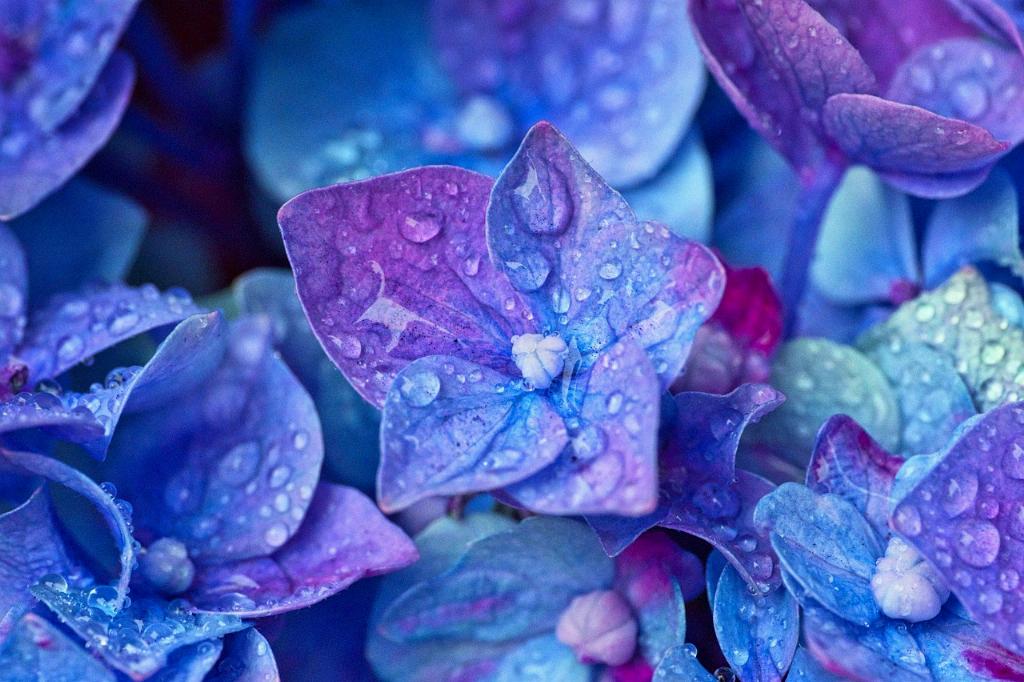Hydrangeas are known for their beautiful blooms, but as any gardener knows, the health of a plant’s leaves is just as important as its flowers. One common issue that many hydrangea owners face is the browning of their leaves. This can be a concerning sight, but understanding the reasons behind this phenomenon can help in addressing and preventing it.
Inadequate Watering
One of the primary reasons why hydrangea leaves may turn brown is inadequate watering. Hydrangeas require consistent moisture to thrive, and if they are not receiving enough water, their leaves can begin to dry out and turn brown. It is essential to ensure that hydrangeas are watered deeply and regularly, especially during hot and dry periods.
Exposure to Strong Light and High Temperatures
Another factor that can cause hydrangea leaves to brown is exposure to strong light, whether it be direct sunlight or intense reflected light. Hydrangeas prefer partial shade, and excessive sun exposure can lead to leaf scorch. Additionally, high temperatures can also stress the plant and result in brown leaves.
Dry, Windy Conditions
Dry, windy conditions can exacerbate the browning of hydrangea leaves. Wind can increase the rate of transpiration, causing the plant to lose moisture more quickly. In such conditions, it is crucial to provide adequate irrigation to prevent the leaves from drying out and turning brown.
Leaf Scorch
Leaf scorch is another common cause of browning in hydrangea leaves. This condition can occur as a result of various factors, including damaged roots or stems. Injuries to the plant, compacted soils, or overwatering and overfertilization can all contribute to leaf scorch, leading to the unsightly discoloration of the leaves.
Root and Stem Health
Ensuring the health of a hydrangea’s roots and stems is essential in preventing leaf browning. Damage to the roots or stems can disrupt the plant’s ability to take up water and essential nutrients, resulting in stress and browning of the leaves. Proper care and maintenance, such as avoiding overwatering and providing well-draining soil, can help maintain root and stem health.
Soil Conditions
The condition of the soil in which hydrangeas are planted can also play a significant role in leaf health. Compacted soils can restrict root growth and water uptake, leading to leaf browning. Ensuring that the soil is loose and well-aerated can promote healthy root development and prevent issues such as leaf scorch.
Overwatering and Overfertilization
While hydration is essential for hydrangeas, overwatering can have detrimental effects on leaf health. Excess moisture in the soil can lead to root rot and nutrient imbalances, resulting in brown leaves. Similarly, overfertilization can cause stress to the plant and lead to leaf discoloration. It is crucial to strike a balance in watering and fertilizing hydrangeas to maintain their health.
Preventive Measures
To prevent hydrangea leaves from turning brown, it is vital to provide proper care and attention to these beautiful plants. Ensuring adequate watering, providing partial shade, protecting from strong winds, and maintaining soil health are crucial steps in preventing leaf browning.
Observation and Adjustment
Regularly observing the health of hydrangea leaves and making adjustments as needed can help in identifying and addressing issues before they escalate. Monitoring soil moisture, light exposure, and plant vigor can provide valuable insights into the overall health of the hydrangeas and prevent leaf browning.
Consulting with Experts
If issues with leaf browning persist despite efforts to address them, seeking advice from gardening experts or horticulturists can provide valuable guidance. Professionals can help diagnose underlying problems and recommend specific solutions tailored to the unique needs of the hydrangeas.
Conclusion
In conclusion, understanding the various factors that can contribute to hydrangea leaves turning brown is essential for maintaining the health and beauty of these plants. By addressing issues such as inadequate watering, excessive sun exposure, dry conditions, and leaf scorch, gardeners can help prevent leaf browning and promote vibrant, healthy hydrangeas in their gardens.

